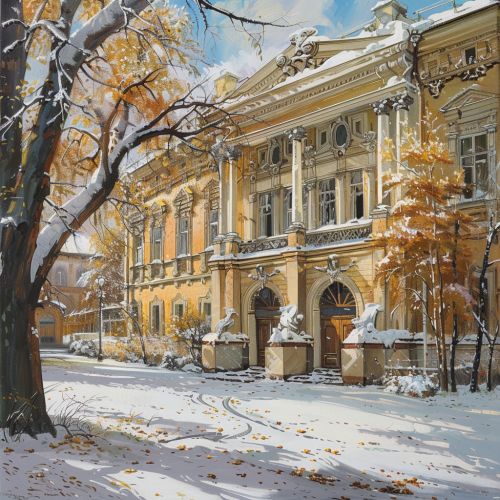Moscow School of Painting, Sculpture and Architecture
History
The Moscow School of Painting, Sculpture and Architecture (MSPSA) was an influential educational institution in Russia, which was active from 1865 to 1917. The school was founded by a group of philanthropists with the aim of providing a high-quality education in the fine arts. It was one of the largest and most respected art schools in the country, attracting students from all over Russia and beyond.


The school was established in a period of significant cultural and social change in Russia, during the reign of Alexander II. This was a time of great reform and modernization, and the school was part of this broader movement. It was intended to provide a modern, professional education in the arts, in contrast to the more traditional and conservative approach of the Imperial Academy of Arts in Saint Petersburg.
Curriculum
The curriculum of the MSPSA was broad and comprehensive, covering all aspects of the fine arts. Students were taught painting, sculpture, and architecture, as well as related disciplines such as drawing, anatomy, and art history. The school was known for its rigorous and demanding program, which aimed to produce artists of the highest caliber.
The teaching at the MSPSA was based on the principles of realism and naturalism. Students were encouraged to study and depict the world around them in a truthful and accurate manner. This approach was in contrast to the more academic and idealized style of art that was taught at the Imperial Academy of Arts.
Faculty and Alumni
The MSPSA was home to a distinguished faculty, which included many of the leading Russian artists of the time. Among the teachers were Vasily Perov, Ilya Repin, and Valentin Serov, who were all renowned for their contributions to Russian art.
The school also produced a number of notable alumni, who went on to make significant contributions to Russian and international art. These include Kazimir Malevich, the founder of Suprematism, and Wassily Kandinsky, a pioneer of abstract art.
Legacy
Despite its closure in 1917 following the Russian Revolution, the legacy of the MSPSA continues to be felt today. The school played a crucial role in the development of Russian art, and its influence can be seen in the work of many artists who studied there.
The MSPSA also had a significant impact on art education in Russia. Its emphasis on realism and naturalism, and its commitment to providing a comprehensive and professional education in the arts, set a new standard for art education in the country.
